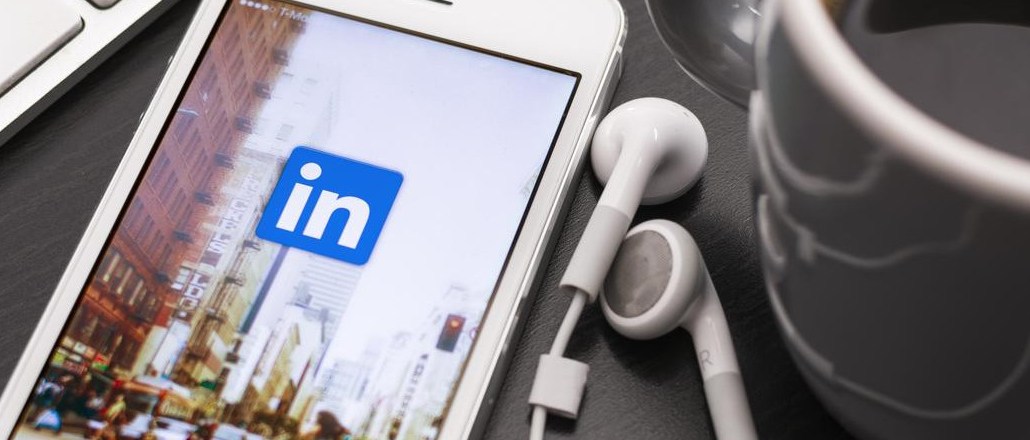Publishers’ on-again, off-again affair with LinkedIn is back on again

Like many other platforms, LinkedIn has swung back and forth between serving up traffic to publishers and not offering much traffic at all. But over the past year, a number of changes made to its platform have significantly increased the traffic LinkedIn drives for business-focused publishers, and it’s about to roll out two more meant to turn it into an even more vital source of readers.
That, in turn, is making publishers approach LinkedIn differently. Again. A number of them have dedicated staffers full time to tending the platform, covering certain topics more frequently, and even considered pulling resources away from other platforms, like Twitter.
“LinkedIn has been, for us, a very good source of traffic,” said Lewis DVorkin, chief product officer at Forbes. “But in the last year, or even a little bit longer, it’s been quite remarkable.”
Across the publishing landscape as a whole, LinkedIn still accounts for a very small amount of traffic. It drives a little more than a quarter of 1 percent of all the referral traffic gathered by the 600 publishers in Parsely’s network, a percentage that’s remained fixed for most of this year.
But publishers that focus on business topics say they’ve seen real, meaningful growth during that time. While DVorkin declined to share hard numbers on how much traffic Forbes gets via LinkedIn, he noted that the total is up 60 percent year-over-year. He also added that Forbes now has over 3.3 million followers on the platform, within shouting distance of the 3.7 million fans it has on Facebook, and almost all of them, DVorkin noted, have come into the fold in the past year: In October 2015, Forbes had just three quarters of a million followers there.
The growth has been robust enough that Forbes decided to dedicate a member of its social media team to LinkedIn full time. Forbes isn’t the only publisher to do so. The Next Web, while it has a smaller footprint on LinkedIn than Forbes, has been so encouraged by LinkedIn’s recent ability to drive traffic that it has diverted more time and energy to the platform, according to TNW’s marketing chief, Martijn Scheijbeler.
LinkedIn’s monthly audience – just over 106 million, according to the company’s latest quarterly earnings – is considerably smaller than Facebook’s, Twitter’s or Snapchat’s, and it has remained relatively flat, over the past year. But it also has very specific interests, and lately LinkedIn has focused on finding ways to help publishers serve them. It redesigned the algorithm that surfaces content inside its news feed, and next year, it will unveil a new wrinkle called the Interest Feed, which will allow users to dive deep into specific topics embedded in stories they read there.
“We’re making it increasingly easier for people to find things they want to follow,” said Jeff Birkeland, a director of product at LinkedIn. “That makes it easier for every user to customize the feed that’s unique to them.”
It has also made a move that should help publishers help themselves. In December, LinkedIn will be rolling out an audience analytics tool it has been testing with a number of partners, including Business Insider and Forbes, which give publishers not just basic demographic data about readers but also information about which verticals they work in, which companies they follow on the platform, what level of seniority they’ve reached and other key data points that make it possible for publishers to cater to readers’ interests.
“I think the most helpful thing we’ve gotten is the companies’ [information],” said Meena Thiruvengadam, Business Insider’s head of audience development. “Now what we see every day is what specific companies drive interest.”
Thiruvengadam said most of the companies BI’s readers follow, like Facebook and Google, were not a surprise to her and her team. But a few unexpected firms, like the database software company Oracle, led to her team sharing more stories about them. Thiruvengadam said BI has also begun sharing more content on finance companies like JPMorgan and Goldman Sachs.
While most publishers still put a minimal amount of time into LinkedIn, Birkeland said he expects more will invest more time into it. “I think the engagement growth that we’re seeing for members is translating,” he said.
More in Media

Walmart rolls out a self-serve, supplier-driven insights connector
The retail giant paired its insights unit Luminate with Walmart Connect to help suppliers optimize for customer consumption, just in time for the holidays, explained the company’s CRO Seth Dallaire.

Research Briefing: BuzzFeed pivots business to AI media and tech as publishers increase use of AI
In this week’s Digiday+ Research Briefing, we examine BuzzFeed’s plans to pivot the business to an AI-driven tech and media company, how marketers’ use of X and ad spending has dropped dramatically, and how agency executives are fed up with Meta’s ad platform bugs and overcharges, as seen in recent data from Digiday+ Research.

Media Briefing: Q1 is done and publishers’ ad revenue is doing ‘fine’
Despite the hope that 2024 would be a turning point for publishers’ advertising businesses, the first quarter of the year proved to be a mixed bag, according to three publishers.







